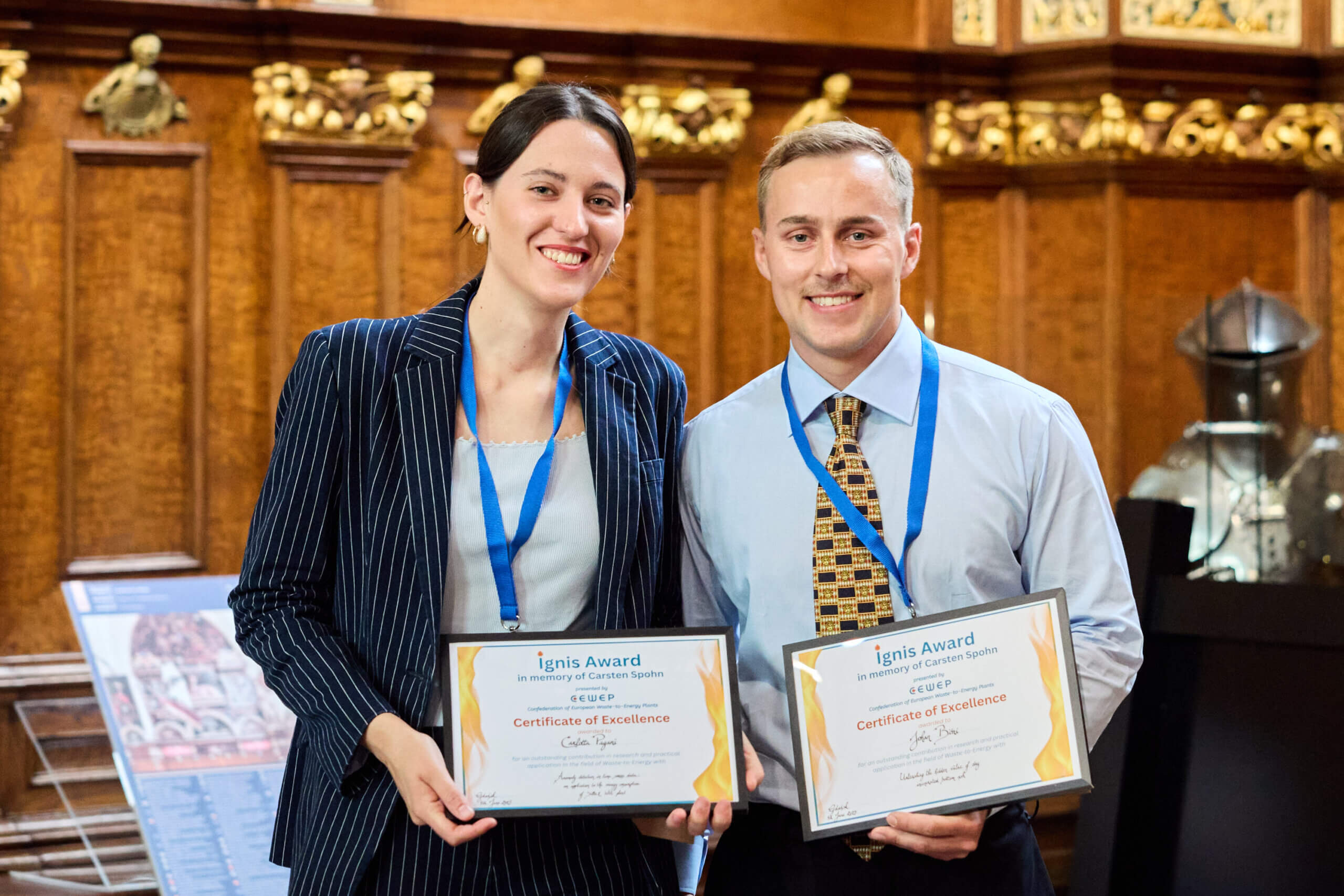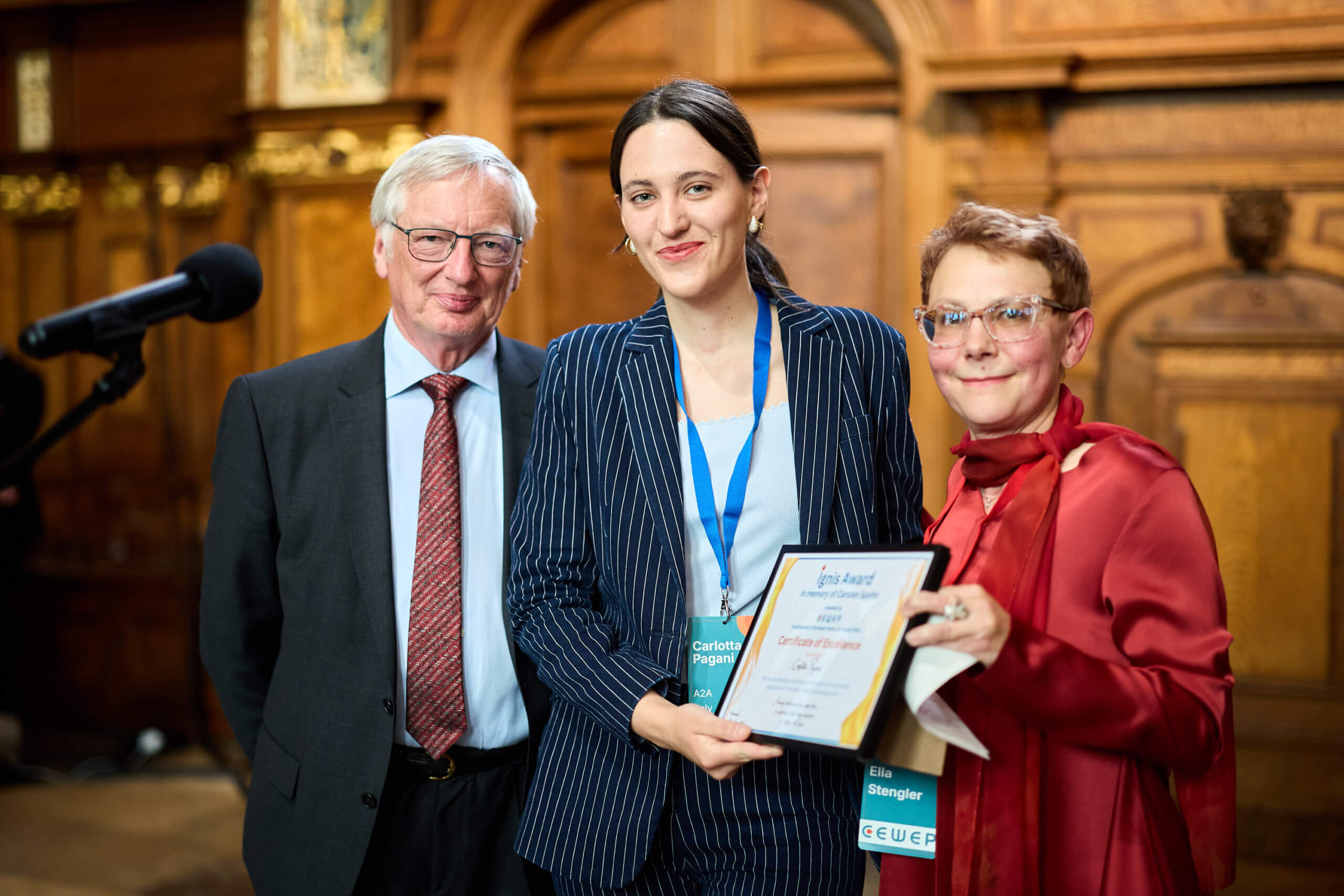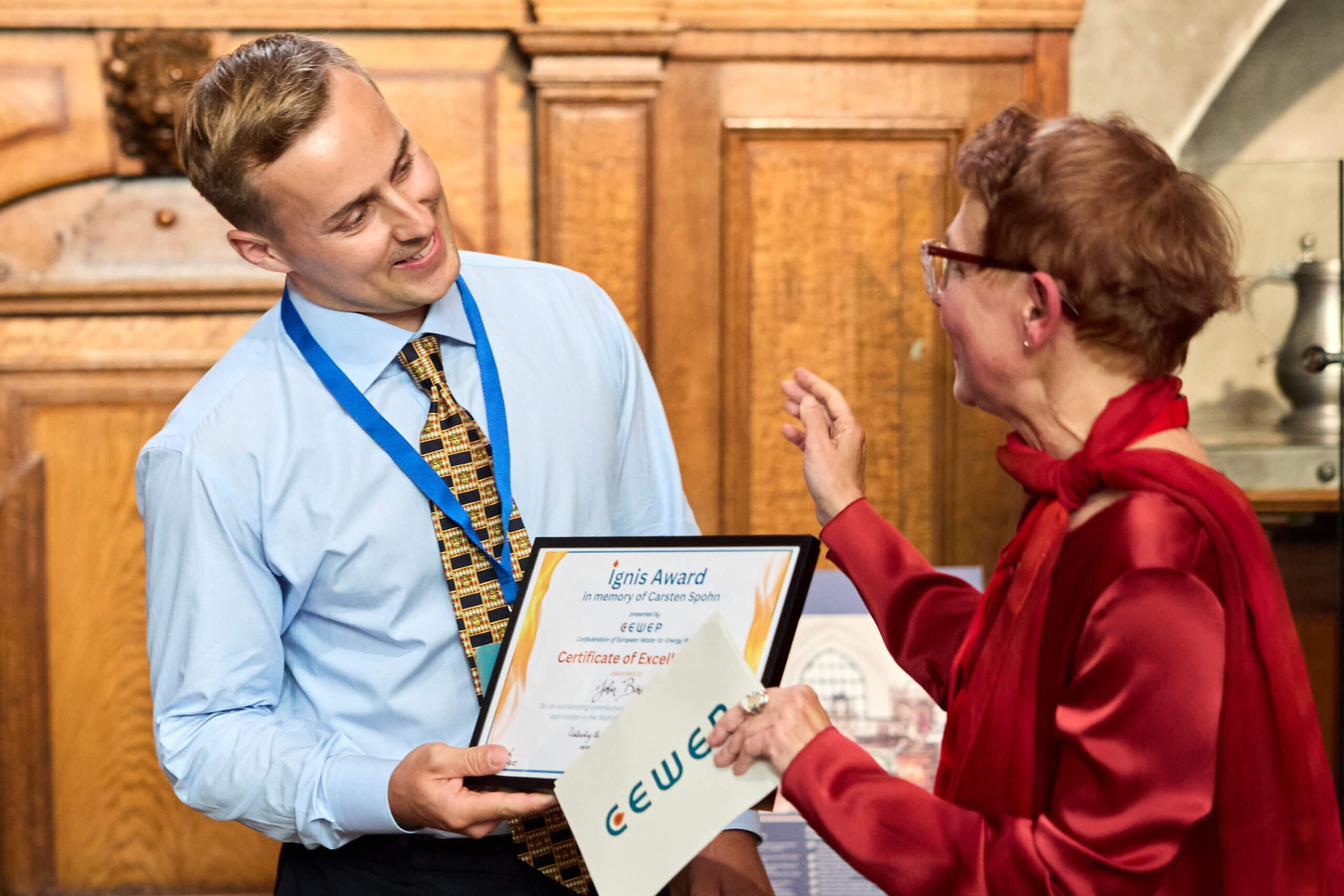News
Gdańsk, 4th June 2025
Another year, another edition of the Ignis Award, created in honour of Carsten Spohn, a pioneering figure in the European Waste-to-Energy (WtE) sector and cherished CEWEP colleague. The award recognises talented students and young professionals from across Europe who have made an outstanding and relevant contribution to the area of waste management, in particular Waste-to-Energy.
The 2025 winners of the Ignis Award are Carlotta Pagani from Italy and Johan Böni from Switzerland, whose works reflected high quality and practical relevance. The abstracts of their research works can be found below. Each winner gets a chance to follow a traineeship in a European Waste-to-Energy plant.
The winners were announced on 4th June 2025 in the Artus Court during the Welcome Dinner of the CEWEP Congress in Gdańsk. As mentioned by Ella Stengler during the Award Ceremony, the works reflect the evolving priorities of our sector: efficient and environmentally sound waste treatment, circularity and practical innovation. Carlotta Pagani’s work illustrates how digitalisation can significantly improve the operational efficiency of Waste-to-Energy plants, offering real-time insights that drive smarter decision-making and energy savings. Johan Böni’s research, on the other hand, fits with the EU’s recent focus on material and resource recovery — his innovative approach to dry IBA treatment not only advances metal recovery but also challenges long-standing economic and technical assumptions.

Carlotta Pagani
Carlotta Pagani holds a bachelor’s degree in Mathematical Engineering and is currently completing her master’s degree in Statistical Learning at Politecnico di Milano. She spent a semester abroad through the Erasmus program at Universitat Politècnica de Catalunya in Barcelona, Spain, within the Department of Industrial Engineering. Her master’s thesis, to be defended on April 3, 2025, is based on the OpSys project conducted with A2A Ambiente, a leading Italian company in waste management services. After graduation, she will continue working with A2A Ambiente to develop AI-driven projects for waste-to-energy plants.
Abstract
The OpSys project optimizes Milan Silla2 WtE’s energy management system in line with ISO 50001 and supports energy audits required by Italian law. It introduces a novel methodology to monitor and analyse energy consumption using statistical models and cutting-edge architectures. Real-time Energy Performance Indicators (EnPIs), as proposed by Utilitalia, are computed to track energy use across plant sections and detect anomalies through advanced detection models. A Microsoft PowerBI dashboard centralises data collection and facilitates discussions with plant personnel. The study examines three key EnPIs related to the steam generator, flue gas treatment, and thermal cycle. One of the main results shows a shift in the booster fan trend, due to rapid baghouse filter fouling, necessary to maintain combustion chamber vacuum. Additionally, the effectiveness of an energy efficiency intervention on the secondary air fan was assessed. This approach enhances real-time monitoring and operational efficiency, while enabling performance comparison between different WtE plants.

Johan Böni
Johan Böni, born in 1995, is a mechanical engineer who graduated from ETH Zürich in 2023, specializing in dry IBA treatment. Over the past 4-5 years, alongside his studies, he worked at Zürich’s sole dry IBA treatment plant, where he was responsible for optimizing and developing the process. Throughout his academic career, Johan dedicated all his mandatory theses to dry IBA treatment, cultivating a deep passion and conviction in its value as a sustainable technology. For his master’s thesis, Johan aimed to offer a holistic understanding of dry IBA treatment, synthesizing his theoretical learning and hands-on experience from recent years. Since the beginning of 2024, he is a part of the Magaldi Power S.p.A group in Italy, working to establish more dry IBA treatment plants. By playing an active role in building new reference plants and offering his unique experience, he aims to convince the WtE industry of the benefits of this sustainable technology and try to remove uncertainties surrounding this relatively unknown dry approach. The treatment process developed in his master thesis has now been patented for commercial use.
Abstract
In the past years, a new dry discharge approach for WtE plants has been introduced that improves recovery efficiency of metals in IBA. Although these improved properties of the IBA
have been demonstrated in literature, existing and recently built WtE plants have not yet adapted to the dry discharge system due to concerns about the large investment size, the complexity and cost coming along with treating IBA in a dry manner. An innovative IBA treatment process developed in this thesis further enhances metal recovery efficiency while reducing the CAPEX of treatment plants, enabling viable business cases even for smaller IBA quantities. With this process, the thesis reject these concerns about dry IBA treatment and provides compelling evidence for the benefits of dry IBA treatment in terms of economic, environmental, and political aspects. Furthermore, it offers insights on how decision-makers can mitigate risks when implementing dry IBA treatment plants in their daily WtE plant activities.
